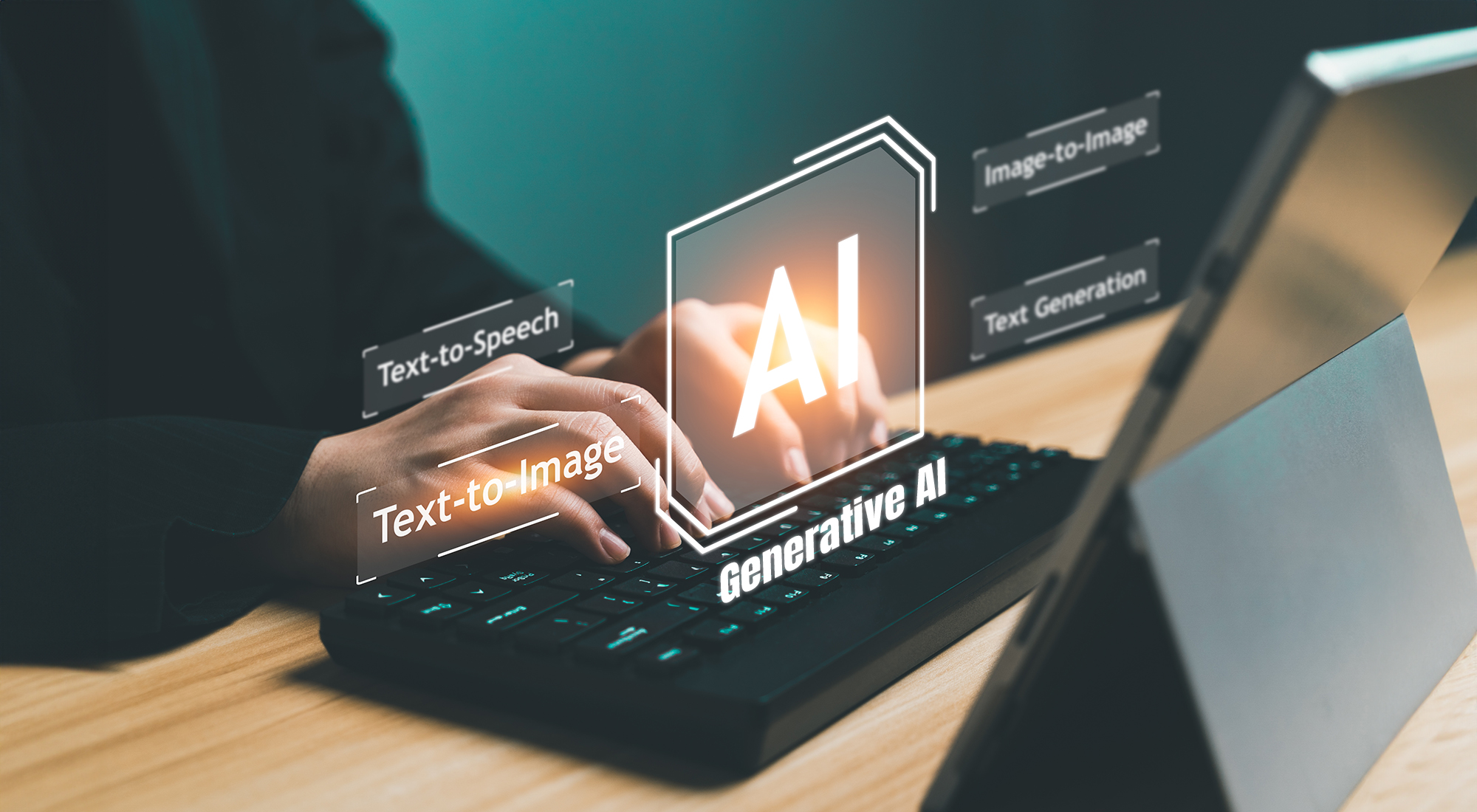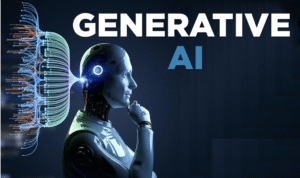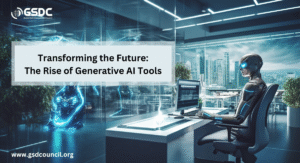
- The Rise of Generative AI in Advertising refers to algorithms that can produce content—text, images, videos, and more—mimicking human creativity. In advertising, this technology enables brands to:Automate Content Creation: Tools like Google’s Product Studio and Meta’s Sandbox allow marketers to generate diverse ad creatives efficiently.Enhance Personalization: By analyzing user data, generative AI crafts tailored messages that resonate with individual preferences.Optimize Campaigns in Real-Time: AI models adjust bidding strategies, target audiences more effectively, and scale campaigns across platforms while maintaining performance

🎯 Key Applications of Generative AI in Advertising
1. Hyper-Personalized Content Creation
The Rise of Generative AI in Advertising enables the creation of tailored ad content by analyzing user data such as demographics, behavior, and preferences. This leads to personalized ad copy, visuals, and offers that resonate with individual consumers, enhancing engagement and conversion rates.
2. Automated Visual and Video Generation
AI tools can generate high-quality images and videos for advertisements, allowing brands to produce diverse and engaging visual content efficiently. This capability is particularly useful for creating dynamic ads across various platforms.
3. Conversational AI and Chatbots
Integrating generative AI into chatbots enhances customer interactions by providing real-time, personalized responses. This not only improves customer service but also guides users through the purchasing journey, increasing the likelihood of conversions.
4. Enhanced A/B Testing and Optimization
The Rise of Generative AI in Advertising facilitates rapid A/B testing by generating multiple ad variations and analyzing performance data to identify the most effective elements. This accelerates the optimization process, ensuring that advertising strategies are data-driven and effective.
RTB House
5. SEO and Content Strategy Enhancement
AI assists in optimizing content for search engines by generating SEO-friendly headlines, meta descriptions, and keywords. This improves the visibility of ads and content, driving more organic traffic to brand platforms.
6. Dynamic Social Media Content
The Rise of Generative AI in Advertising automates the creation of social media posts, ensuring consistent and engaging content across platforms.
7. Lead Generation and Scoring
AI models analyze user interactions and behaviors to identify potential leads and assess their readiness to convert. This enables marketers to prioritize high-quality leads and tailor their outreach strategies accordingly.
Delve AI
8. Multimodal and Multilingual Campaigns
Advanced AI frameworks support the creation of ads that combine text, images, and audio, catering to diverse audiences across different languages and cultures. This broadens the reach and impact of advertising campaigns.
9. Real-Time Consumer Insights
The Rise of Generative AI in Advertising analyzes real-time data to provide insights into consumer behavior and preferences. This information helps brands adapt their strategies promptly to meet evolving customer needs.
10. Ethical and Compliant Advertising

🛠️ Tools and Platforms Leveraging Generative AI
-
1. Jasper
Jasper is a generative AI platform specifically designed for marketing. It assists in creating brand-aligned content, including ad copy, blog posts, and social media content, while ensuring consistency with brand voice and messaging.
2. AdCreative.ai
AdCreative.ai focuses on generating conversion-optimized ad creatives. It offers features like AI-driven product photoshoots, creative scoring, and performance analytics to help marketers produce effective visual content for various advertising platforms.
3. Creatify
Creatify is a tool that transforms product links or descriptions into engaging short video ads, making it ideal for social media marketing. It includes features like AI avatar generation, scriptwriting, and text-to-speech capabilities.
-
4. Figma Buzz
Figma Buzz is part of Figma’s suite of AI-powered tools aimed at marketers. It enables the creation of brand-approved templates and diverse content such as emails and social media posts, streamlining the content creation process.
5. Anyword
Anyword utilizes AI to generate and optimize marketing text for various channels, including websites, social media, email, and ads. It provides predictive performance scores to help marketers choose the most effective copy.
6. SOMONITOR
SOMONITOR combines explainable AI with large language models to enhance marketing analytics. It aids in competitor analysis, content research, and strategic branding by providing actionable insights throughout the marketing funnel.
7. ACAI (AI Co-Creation for Advertising and Inspiration)
ACAI is designed to assist small business owners in creating high-quality advertisements. It offers a multimodal interface that bridges the design skill gap, allowing users to produce effective ads without extensive design experience.
8. Agentic Multimodal AI Framework
This framework integrates retrieval-augmented generation and multimodal reasoning to create hyper-personalized ads for both B2B and B2C markets. It adapts to shifting consumer behaviors and competition, optimizing advertising strategies at scale.

📰 Recent Developments in The Rise of Generative AI in Advertising
1. Emergence of Answer Engine Optimization (AEO)
With the rise of AI-driven search tools like ChatGPT, Claude, and Google’s Gemini, traditional SEO is evolving into Answer Engine Optimization (AEO). AEO focuses on crafting content that directly answers user queries, increasing visibility in AI-generated responses. This shift allows even lesser-known brands to gain prominence without relying solely on traditional search rankings.
2. AI-Powered Personal Shopping Assistants
OpenAI has introduced a shopping assistant feature in ChatGPT, enabling users to receive personalized product recommendations complete with images, reviews, and direct links. This development is particularly beneficial for smaller brands, as AI-driven suggestions are based on relevance rather than advertising spend, leveling the playing field in product discovery.
3. Integration of AI in Creative Workflows
Companies like WPP are extensively incorporating AI into their creative processes. WPP’s proprietary platform, WPP Open, utilizes large language models to generate campaign content, including videos and slogans. Features like “Unspoken Truths” and “Shower Thoughts” aid in brainstorming, while “Brains” simulates synthetic focus groups to test ideas. This integration allows for more data-driven personalization and efficient content creation.
4. Rise of AI-Generated Ad Campaigns
Companies like Omneky are leveraging AI to automate the creation and deployment of ad campaigns across multiple platforms. Their tools can generate personalized content variations at scale, analyze performance data, and optimize campaigns in real-time, enhancing efficiency and effectiveness in advertising strategies.
5. Evolution of Customer Journeys
Generative AI is reshaping the traditional customer journey, enabling brands to connect with consumers more quickly and effectively. By delivering hyper-personalized experiences based on individual preferences and behaviors, AI helps accelerate the path from discovery to purchase, improving engagement and conversion rates.
🎨 Creative Empowerment Through AI.
- Storytelling at Scale: AI-driven storytelling tools enable brands to craft compelling narratives that engage audiences across different channels.
- Visual Innovation: Platforms like DALL·E and MidJourney facilitate the creation of unique visuals, reducing reliance on stock imagery.

The Future Outlook
-
1. Hyper-Personalization at Scale
Generative AI is enabling brands to craft highly personalized marketing campaigns by analyzing vast amounts of consumer data. This allows for the creation of tailored content that resonates with individual preferences, leading to increased engagement and conversion rates. Companies are leveraging AI to deliver customized experiences across various touchpoints, enhancing customer satisfaction and loyalty.
2. Multimodal AI Integration
The integration of multimodal AI is revolutionizing content creation by enabling the processing and generation of content across multiple formats, including text, images, audio, and video. This capability allows for the development of cohesive and immersive marketing campaigns that engage consumers through various sensory channels, enhancing brand storytelling and consumer interaction.
3. Ethical AI and Consumer Trust
The Rise of Generative AI in Advertising becomes more prevalent in advertising, ensuring ethical practices and maintaining consumer trust are paramount. Brands are focusing on transparency, data privacy, and responsible AI usage to build and sustain consumer confidence. Implementing ethical guidelines and governance frameworks is essential to mitigate risks associated with AI-generated content and to foster long-term relationships with consumers.
4. AI-Driven Search and Content Discovery
The shift towards AI-powered search engines is redefining how consumers discover content and products. Brands are adapting to this change by optimizing their content for AI-driven platforms, ensuring visibility and accessibility. This evolution necessitates a strategic approach to content creation and distribution, focusing on relevance and quality to meet the demands of AI algorithms and consumer expectations.
5. AI-Powered Creative Tools
The development of AI-powered creative tools is empowering marketers and designers to produce high-quality content efficiently. These tools offer features such as automated design generation, content optimization, and performance analytics, streamlining the creative process and enabling rapid adaptation to market trends. By leveraging AI, brands can enhance their creative capabilities and maintain a competitive edge in the dynamic advertising landscape.
for more details https://farsinparakkal.com/